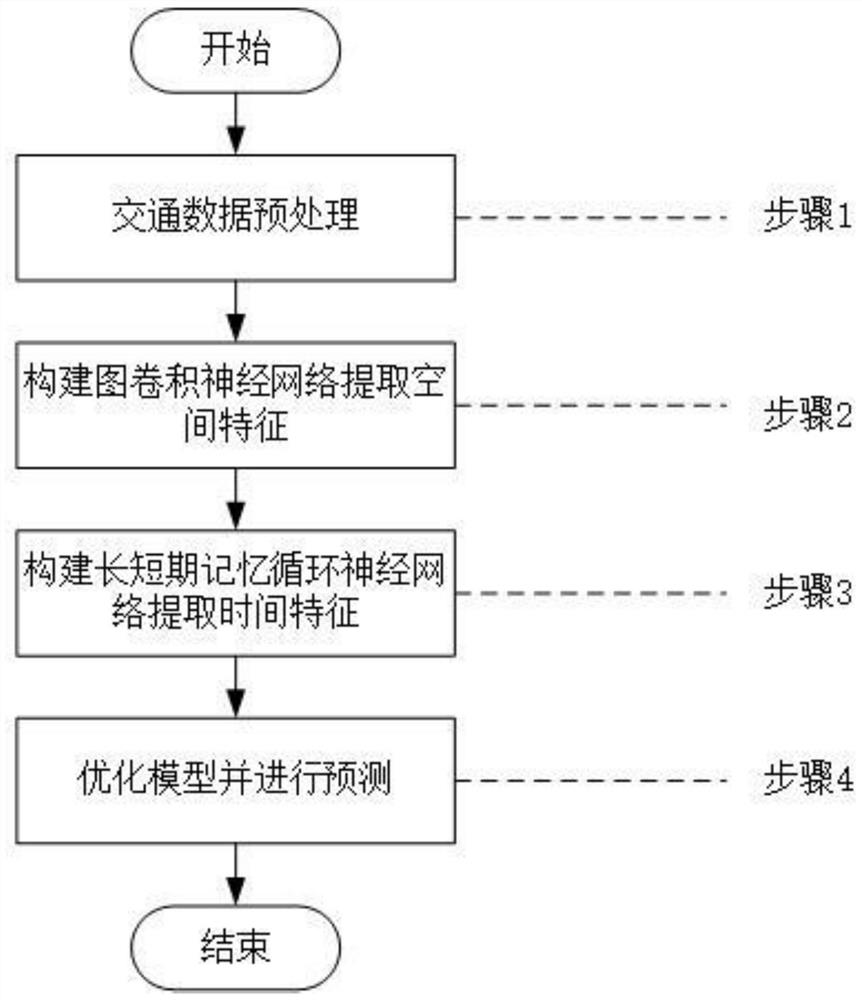Bus station passenger flow volume prediction method based on GCN-LSTM combination model
A combined model and passenger flow technology, applied in forecasting, neural learning methods, biological neural network models, etc., can solve the problems of only considering the time series relationship and cannot obtain the law of traffic data changes well, and improve the forecasting effect. Effect
- Summary
- Abstract
- Description
- Claims
- Application Information
AI Technical Summary
Problems solved by technology
Method used
Image
Examples
Embodiment Construction
[0034] The steps of the present invention will be described in detail below in conjunction with the accompanying drawings.
[0035] Step 1. Traffic flow data preprocessing
[0036] First, according to the bus route information and station information, the road topology graph is constructed for the bus station, where the graph is represented by G, V represents the set of all stations, and E represents the set of adjacent relations of the stations. It is stored in the form of an adjacency matrix, which is a two-dimensional matrix of s*s, and the value of the adjacency matrix is 0 or 1. Among them, s represents the number of bus stops, and the rows and columns represent the stations arranged in the order of the bus stop numbers. In the value of the adjacency matrix, 0 means that the two sites are not adjacent, and 1 means that the two sites are adjacent, and the adjacency matrix is symmetrical Matrix, where the adjacency matrix is denoted as A.
[0037] Secondly, feature ...
PUM
 Login to View More
Login to View More Abstract
Description
Claims
Application Information
 Login to View More
Login to View More - R&D Engineer
- R&D Manager
- IP Professional
- Industry Leading Data Capabilities
- Powerful AI technology
- Patent DNA Extraction
Browse by: Latest US Patents, China's latest patents, Technical Efficacy Thesaurus, Application Domain, Technology Topic, Popular Technical Reports.
© 2024 PatSnap. All rights reserved.Legal|Privacy policy|Modern Slavery Act Transparency Statement|Sitemap|About US| Contact US: help@patsnap.com










